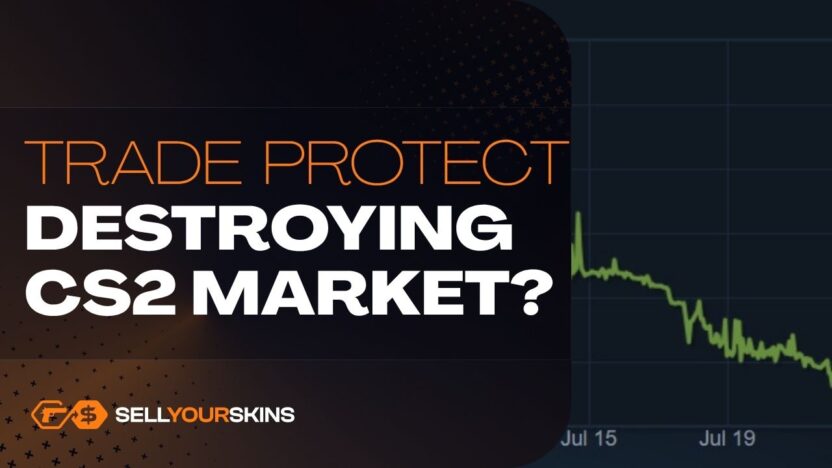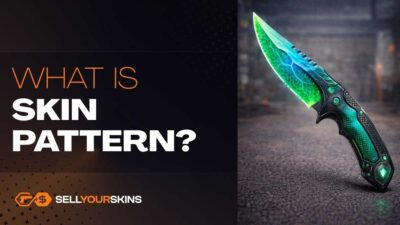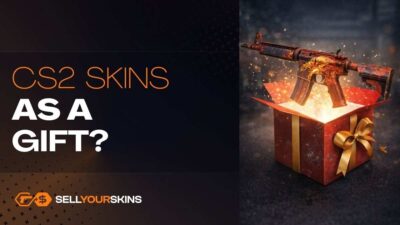The introduction of Steam’s new Trade Protection system has caused a wave of discussions in the CS2 community. While Valve claims the feature is designed to protect players from scams and mistakes, many traders and third-party marketplaces worry it could harm the entire skin economy. CS2 trading relies on fast, secure, and permanent transactions, but with the option to reverse trades within 8 days, that stability is under threat. In this article, we explore whether Steam Trade Protection could damage the CS2 trading scene and impact platforms dedicated to skin trading.
Growing Skepticism Among Traders
One of the biggest concerns about the Trade Protection system is the increased uncertainty it introduces. Until now, when two players completed a trade, both sides could trust that the items had permanently changed ownership. With the new 8-day reversal window, traders must now consider the possibility that the other person might change their mind – not because of a scam, but simply out of spite or “trolling”. This uncertainty could make players far more cautious when trading, especially with high-value skins. A buyer who invests hundreds or thousands of dollars in rare items may fear that the trades could be reversed without warning. Over time, this skepticism could lead to fewer trades, slower transactions, and a noticeable drop in market confidence.
Problems for Instant Skin Selling Platforms
Websites that built their reputation on instant skin sales may face serious challenges due to the Trade Protection system. These platforms rely on the ability to purchase and resell CS2 skins immediately, without the risk of an item being pulled back. With the 8-day reversal window, this business model becomes very unstable. If a user sells a skin to a site and then reverses the trades, the platform could lose both the item and the money paid out, leading to financial losses and disputes.
To minimize risk, many of these services may have to introduce waiting periods before reselling or withdrawing skins. This goes against their core promise of “instant” trading and could frustrate users accustomed to fast transactions. Some platforms might even stop accepting recently traded items altogether, especially those still under Trade Protection, which could reduce their inventory and overall attractiveness to buyers. In the long term, this could push traders away from third-party sites and potentially shrink the entire CS2 trading ecosystem.
Read also: CS2 Trade Reversal Guide: How to Undo a Steam Trade with Trade Protection?
How Trade Protection Could Lower the Value of Skins?
The value of CS2 skins, especially rare and expensive ones like Dragon Lore AWP or high-tier knives, is strongly tied to market stability and trader confidence. With the introduction of Trade Protection, every item now carries a hidden risk: it can be reversed within 8 days. For high-value skins, even the slightest uncertainty can reduce their demand, as buyers might hesitate to pay premium prices for an asset that is not guaranteed to remain in their inventory. Professional traders and collectors who invest thousands of dollars in rare skins rely on instant ownership transfer to secure deals. If there is a risk that trades could be undone, they may lower their offers to compensate for this risk.
Over time, this could cause a general drop in skin prices, particularly for rare items where every small fluctuation in trust has a large impact on market value. Moreover, marketplaces could respond by adding extra verification layers or holding items during the 8-day protection period, which would slow down trading activity and reduce liquidity. A market with fewer active buyers and sellers naturally experiences price drops, as fewer people are willing to take on the risk of purchasing items under potential reversal.
Will Valve Adjust Trade Protection to Protect Both Players and the Market?
It’s possible that Valve will fine-tune the Trade Protection system to balance safety with market stability. The current 8-day reversal window, while helpful for scam victims, is very long for an active trading market. Valve could consider shortening the reversal period or limiting the feature to specific high-risk situations, such as trades with new accounts or trades flagged by suspicious activity patterns. Valve has a history of listening to the community when changes affect the CS2 economy. If the backlash from traders, skin platforms, and investors is strong, we might see adjustments or additional safeguards designed to prevent abuse, while still protecting players from scams. Ultimately, the challenge for Valve is to ensure that player safety does not come at the cost of destroying one of the most vibrant game economies in the world.
Read also: New Steam Trade Protection Update – How It Affects the CS2 Skin Market?
Final Thoughts – What’s Next for the CS2 Skin Market?
The future of the CS2 skin market largely depends on how Valve responds to community feedback about Trade Protection. If the current system remains unchanged, we may see a temporary slowdown in trading, with lower liquidity and falling prices for expensive skins. Professional traders and marketplaces will likely adapt by adding waiting periods or strict verification processes, but this will make trading less convenient and possibly drive some users away.
On the other hand, if Valve tweaks the system – shortening the reversal window or adding better detection of fraudulent trades – the market could stabilize and continue to grow. CS2 skins have always held strong value thanks to their rarity and demand, and with the right balance between player protection and market trust, they can remain one of the most stable virtual economies in gaming. In the coming months, we can expect traders to experiment with new strategies, while third-party platforms will adjust their policies to reduce risks. Whether Trade Protection becomes a helpful tool or a threat to the CS2 market will depend on how responsibly it is used and managed by both Valve and the trading community.



